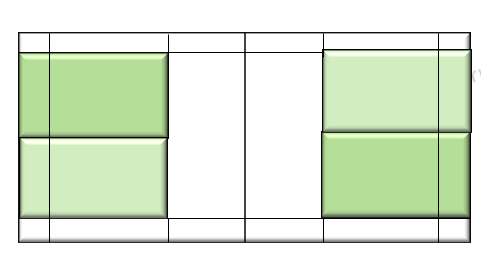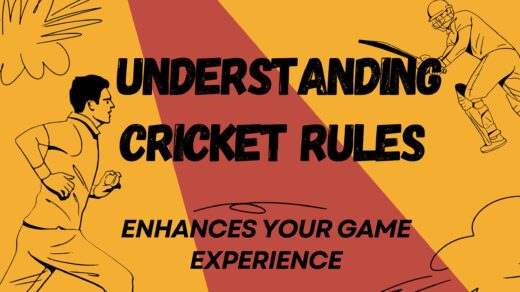Badminton: History, Court Measurement, Equipment, Rules and Fault
Badminton, known for its speed, precision, and grace, is a sport that captivates millions around the world. From its historical origins to its modern-day prominence, badminton has grown into a beloved global sport. This blog post explores the history of badminton, its governing bodies, detailed rules and measurements.
History of Badminton
Ancient Beginnings
- Origins: Badminton’s roots go back to ancient Greece and Egypt.
- Early Games: People played games with a shuttlecock and wooden paddles called battledores. These early games were fun for both kids and adults and set the stage for the sport we know today..
Development in British India
- 18th Century: In the 18th century, British India played a key role in shaping badminton. British military officers stationed in India enjoyed a game called “Poona,” named after the town of Pune.
- By 1850, Poona had become very popular among these officers. When the officers returned to England, they brought the game with them.
- In 1873, they introduced it at Badminton House in Gloucestershire, giving the game its current name.
Setting Rules and Hosting Championships
- The first official badminton rules were created in England in 1887.
- These rules were updated in 1895 and 1905.
- The All England Open Badminton Championships, first held in 1899, became the sport’s oldest and most prestigious tournament.
Creating Governing Bodies
- 1934: Formation of the International Badminton Federation (IBF) by nine countries.
- Founding members: Canada, Denmark, England, France, the Netherlands, Ireland, New Zealand, Scotland, and Wales.
- Today: IBF, now called the Badminton World Federation (BWF), has 176 member nations.
Badminton’s Global Popularity
- Countries: Especially popular in China, Japan, Malaysia, Indonesia, India, and South Korea.
- Achievements: These countries produce many top players and dominate international competitions.
Major Competitions and the Olympics
- 1962: Badminton included in the Asian Games.
- 1992: Badminton became an Olympic sport at the Barcelona Games.
- Major Competitions:
- Thomas Cup (World Men’s Team Championships) since 1948-49.
- Uber Cup (World Team Championships for Women) since 1957.
- BWF World Championships since 1977.
India’s Role and Achievements
- 1936: All India Badminton Association became an IBF member.
- Notable Players:
- P. V. Sindhu: Gold medal at 2019 World Championships, Olympic silver medal in 2016.
- Saina Nehwal: Multiple awards and honors.
Recognizing Badminton Legends
- Arjuna Award:
- First recipients: N. M. Natekar and Meena Shah in 1961.
- Dronacharya Award:
- First recipient: S. M. Arif in 2000.
Measurement of Badminton Court

A standard badminton court is 44 feet (13.4 meters) long and 20 feet (6.1 meters) wide for doubles, and 17 feet (5.18 meters) wide for singles.
Service Court for Singles and Doubles in Badminton
Understanding the differences in service court dimensions and rules for singles and doubles is crucial for playing badminton correctly.
Singles Service Court
- Dimensions
- Length: 13.4 meters (the entire court length).
- Width: 5.18 meters (narrower court).
- Service Area
- Short Service Line: 1.98 meters from the net.
- Long Service Line: The back boundary line.
- Side Boundaries: The inner side lines.
- Serving Rules
- Even Score: Serve from the right service court.
- Odd Score: Serve from the left service court.
- Serve diagonally into the opponent’s service court.

Doubles Service Court
- Dimensions
- Length: Shorter than singles; up to the long service line for doubles, which is 0.76 meters from the back boundary line.
- Width: 6.1 meters (wider court).
- Service Area
- Short Service Line: 1.98 meters from the net.
- Long Service Line: 0.76 meters inside the back boundary line.
- Side Boundaries: The outer side lines.
- Serving Rules
- Service Rotation: Partners rotate positions and alternate serves.
- Serve diagonally into the opponent’s service court.
- Even Score: Serve from the right service court.
- Odd Score: Serve from the left service court

Summary
- Singles: Uses a narrower and longer court for serving.
- Doubles: Uses a wider court but has a shorter back service line.
- Serve Diagonally: Always serve to the diagonally opposite service court.
- Score-Based Positioning: In both singles and doubles, the server’s position (left or right court) depends on whether their score is even or odd.
Knowing these differences helps players follow the rules correctly and enhances gameplay.
Badminton Net & Pole
Net Specifications
- Height
- At the Posts: 1.55 meters (5 feet 1 inch).
- At the Center: 1.524 meters (5 feet).
- Width
- Total Width: 6.1 meters (20 feet).
- Material
- Net: Made of fine cord of dark color, preferably nylon, with a mesh size between 15 mm to 20 mm (0.6 to 0.8 inches).
- Top Tape: A white tape 75 mm (3 inches) wide folded over a cord or cable running through the tape.
Poles Specifications
- Height
- Standard Height: 1.55 meters (5 feet 1 inch) from the ground.
- Placement
- Singles and Doubles: Poles should be placed on the doubles sidelines, regardless of whether singles or doubles is being played.
- Distance from the Court: Poles should be placed on the outer edge of the doubles sideline to ensure the net is stretched tightly.

Badminton Racket Specifications
- Components
- Frame: Comprises the head, shaft, and handle.
- Strings: Strung across the head to create the hitting surface.
- Grip: Located on the handle to provide a comfortable and secure hold.
- Dimensions
- Total Length: Maximum of 680mm (27 inches).
- Head Width: Maximum of 230mm (9 inches).
- Weight
- Range: Typically between 80-100 grams (2.8-3.5 ounces), including strings and grip.
- Material
- Frame: Usually made of lightweight materials like carbon fiber, graphite, or aluminum.
- Strings: Made of synthetic materials such as nylon or gut.

Badminton Shuttlecock Specifications
- Components
- Feathers: 16 feathers fixed in a cork or synthetic base.
- Base: Made of cork, covered with leather or synthetic material.
- Types
- Feather Shuttlecocks: Used in professional and high-level play.
- Plastic Shuttlecocks: Used in recreational and beginner play.
- Weight
- Range: 4.74-5.50 grams.
- Dimensions
- Length: 62-70mm from the tip of the feathers to the base.
- Diameter of the Feather Circle: 58-68mm.
- Diameter of the Base: 25-28mm.
- Flight
- Designed to be aerodynamic, ensuring stable flight.
- Feathers are curved to produce a high drag, slowing down the shuttlecock.

Rules Of Badminton
Serving Rules
- Service Area: In singles, the serve must be made diagonally across the court into the opponent’s service area. In doubles, the serve must also be diagonal but within the wider service box.
- Service Faults: The serve must be delivered below the server’s waist (defined as the lowest rib). The racket head must be pointing downwards and should not be above the server’s hand holding the shuttle.
- Alternating Serves: In doubles, the server changes from the right to the left service court after winning a point. If the serving side loses a point, the opponents serve next.
Gameplay Rules
- Rallies: Players must hit the shuttlecock over the net and into the opponent’s court. A rally ends when the shuttlecock hits the ground, a fault is committed, or the shuttlecock is hit out of bounds.
- Faults: Common faults include hitting the shuttlecock out of bounds, failing to hit the shuttlecock over the net, touching the net with the racket or body, and serving incorrectly.
- Lets: A ‘let’ is called to stop play and replay a point. This can happen if the shuttlecock gets caught on top of the net, if players disagree on a point, or if there is an outside distraction.
Scoring System
- Match Format: A standard badminton match is best of three games. Each game is played to 21 points.
- Scoring Points: A point is scored on every serve, regardless of who served. The winner of a rally scores a point and serves the next rally.
- Winning a Game: The first player or pair to reach 21 points wins the game. However, a game must be won by at least a 2-point margin. If the score reaches 20-20, the game continues until a player or pair leads by 2 points, up to a maximum of 30 points.
Fault in badminton
- if a service is not correct
- Shuttle is hit by the receiver’s partner
- if, in service, the shuttle is caught on the net and remains suspended on its top
- Shuttle fails to pass over the net.
- Shuttle touches any other object or person outside the court.
- If the shuttle hits the body or dress of a player, the point goes to the other player.
- If Shuttle is caught and held on the racket and then slung during the execution of a stroke.
- Player obstructs an opponent, i.e. prevents an opponent from making a legal stroke where the shuttle is followed over the net. deliberately distracts an opponent by any action such as shouting or making gestures.
- When the shuttle does not travel towards the opponent’s court, It shall be a fault. suppose in doubles the shuttle touches one player’s racket, continues travelling backwards, and is then hit by that player’s partner
- Player invades an opponent’s court under the net with racket or person such that an opponent is obstructed or distracted.
- Player invades an opponent’s court over the net with racket or person , If the initial point of contact with the shuttle is not on the striker’s side of the net. … however, follow the shuttle over the net with the racket in the course of a stroke.
Player Conduct and Etiquette
- Fair Play: Players should always adhere to the principles of fair play, respect their opponents, and follow the rules strictly.
- Conduct on Court: Unsportsmanlike behavior, such as intentional distractions, verbal abuse, or deliberate delays, can result in a warning, point penalties, or even disqualification.
- Respect for Officials: Players must respect the decisions of the umpire and other match officials. Disputes should be resolved calmly and respectfully.
Key Awardees in Indian Badminton
Dronacharya Award
The Dronacharya Award is given to outstanding coaches in sports. The first badminton coach to receive this award was Syed Mohammed Arif in 2000.
Arjuna Award
The Arjuna Award is given for outstanding achievement in sports. Nandu Natekar was the first badminton player to receive this award in 1961.
Rajiv Gandhi Khel Ratna Award
The Rajiv Gandhi Khel Ratna is India’s highest sporting honor. Pullela Gopichand was the first badminton player to receive this award in 2001.
Major Cups and Tournaments
Badminton World Championships
The BWF World Championships, established in 1977, is an annual event that crowns the world champions in men’s and women’s singles, doubles, and mixed doubles.
Thomas Cup
The Thomas Cup is the world team championship for men’s badminton, held every two years. It was first held in 1949.
Uber Cup
The Uber Cup is the world team championship for women’s badminton, first held in 1956.
Sudirman Cup
The Sudirman Cup is a mixed team championship, featuring both men’s and women’s events. It was first held in 1989.
Narang Cup
The Narang Cup is a prominent national-level tournament in India, aimed at fostering young talent and providing a platform for emerging players.
Famous Personalities in Badminton
Pullela Gopichand
Pullela Gopichand is a former Indian badminton player and the current chief national coach. He won the All England Open Badminton Championships in 2001, becoming the second Indian to achieve this feat after Prakash Padukone.
Prakash Padukone
Prakash Padukone is one of India’s greatest badminton players. He won the All England Open Badminton Championships in 1980, the first Indian to do so. His achievements laid the foundation for the sport’s growth in India.
PV Sindhu
PV Sindhu is one of the most successful badminton players in India. She is the first Indian woman to win an Olympic silver medal (2016) and also secured a bronze in the Tokyo 2020 Olympics. Sindhu won the BWF World Championships in 2019, becoming the first Indian to do so.
Meena Shah
Meena Shah was a dominant force in Indian women’s badminton in the 1950s and 1960s. She won the National Badminton Championship multiple times and was awarded the Arjuna Award in 1962.
Saina Nehwal
Saina Nehwal is a trailblazer in Indian badminton. She was the first Indian to win a BWF Super Series title in 2009 and secured a bronze medal at the 2012 London Olympics. Nehwal has been a former world number one and has inspired many young athletes in India.
Conclusion
Badminton, with its rich history, detailed rules, and prestigious tournaments, continues to be a sport that captivates millions around the world. The contributions of legendary players and the efforts of governing bodies have elevated the sport to great heights. As badminton continues to grow and evolve, it remains a testament to the spirit of competition, dedication, and excellence in sports. Whether you’re a player, coach, or fan, the world of badminton offers something for everyone to enjoy and celebrate.

